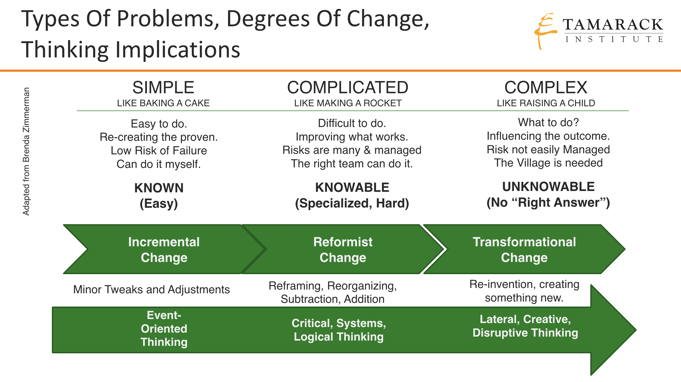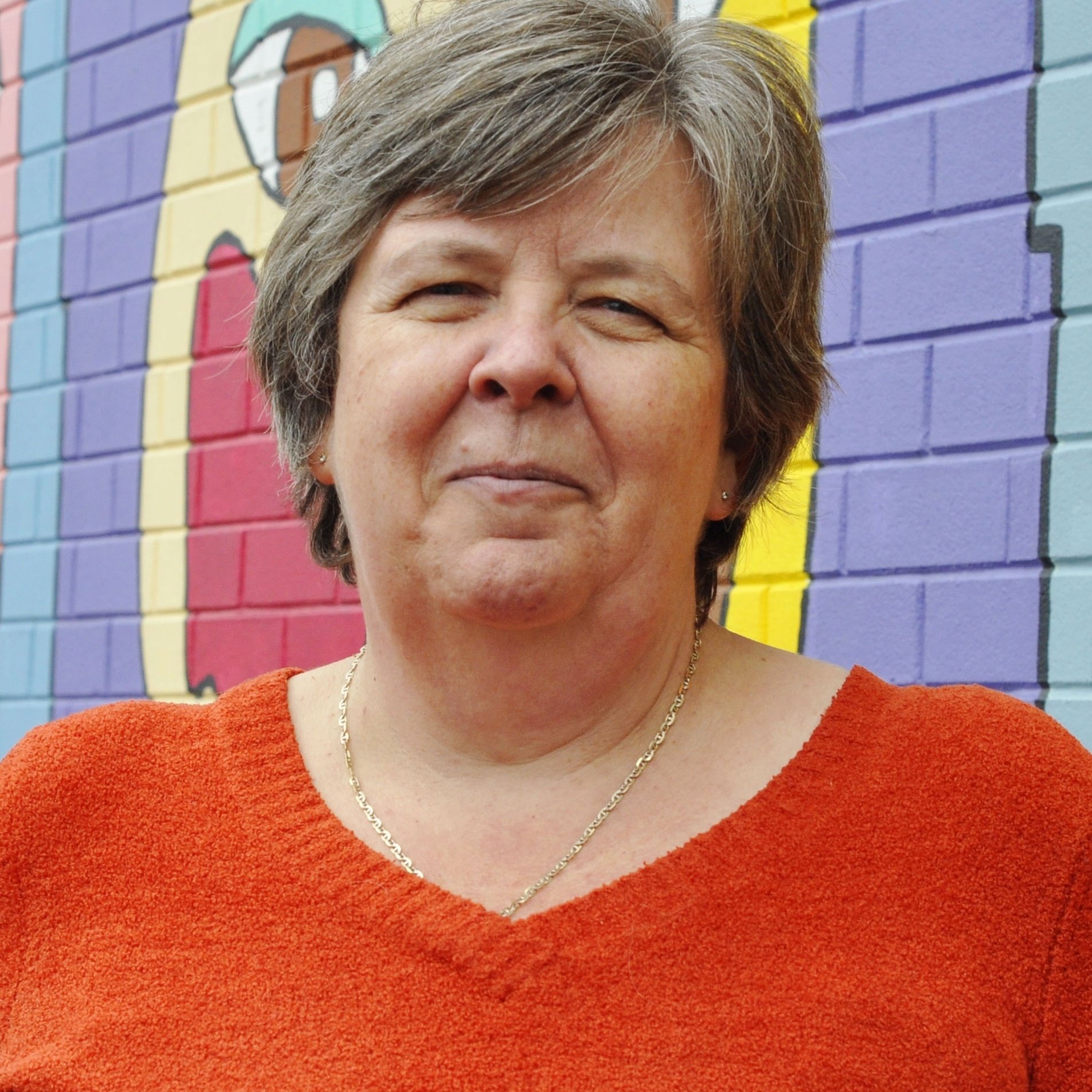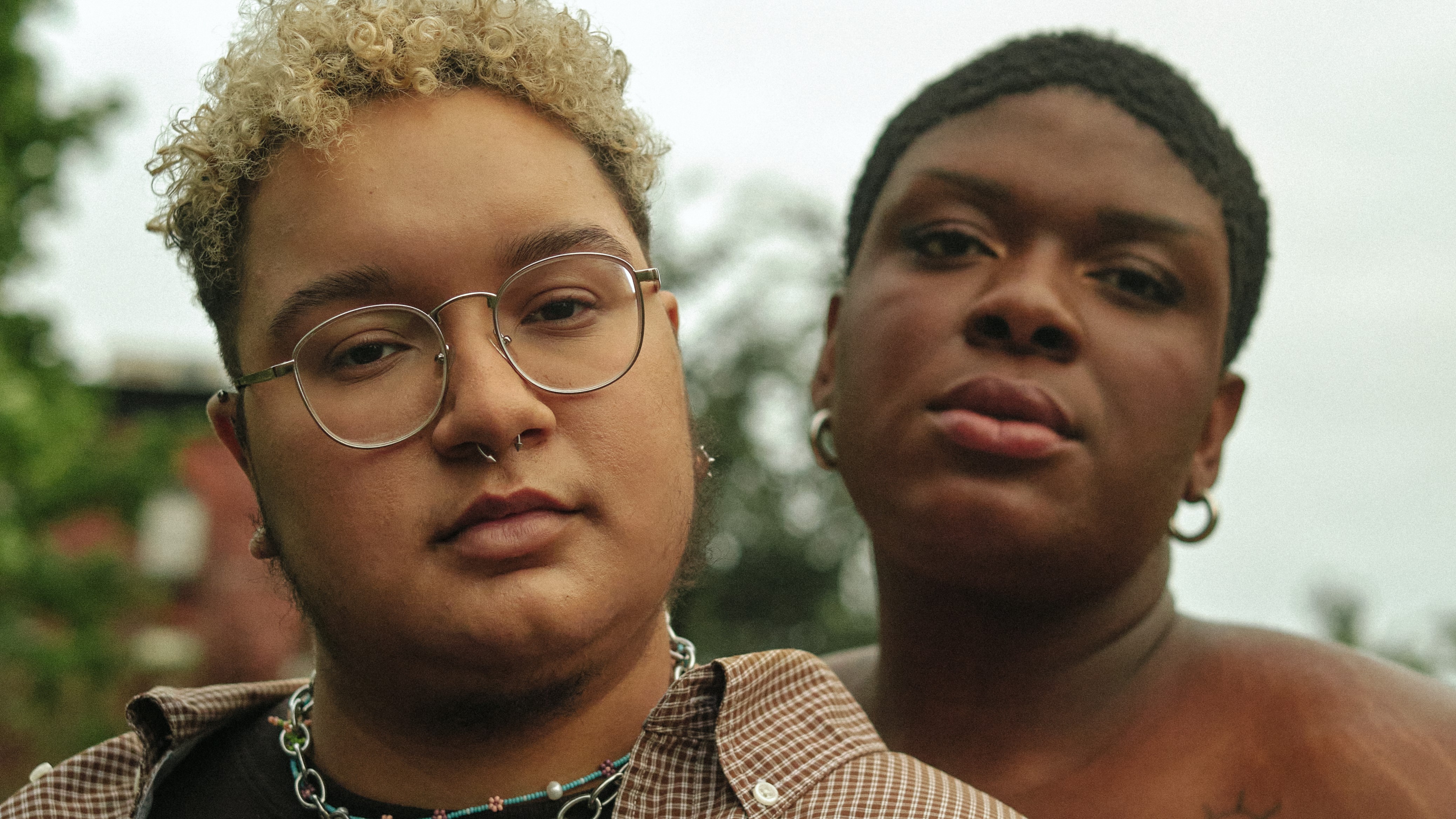The Tamarack Institute and the Ontario Trillium Foundation are hosting a webinar series on the theme of Transforming Communities. We all know that transforming communities is challenging work. It can be made even more difficult when those undertaking the transforming process do not understand or focus on readiness as a pre-condition for their work.
Understanding community readiness is about due diligence and intentionality. The second webinar in the transforming communities’ series focused on problem identification and scoping. You can access the webinar recording here. You can also access a copy of the slidedeck here.
The webinar provided useful insights into how to identify the type of problem trying to be solved and also strategies for scoping the context of the problem. Tamarack has long been influenced by the work of Brenda Zimmerman and others who have written about the different nature of problems that our communities face. Determining whether it is a simple, complicated or complex problem can lead to employing different tactics to solve these problems. Determining the nature of the problem is a helpful first step.

The second step is undertaking a process to determine the scope, scale and relevant factors that have made the problem intractable or unmoveable. The scoping process requires that community change makers look at the current and possible trending data about the problem. Is the data showing a positive or negative trend over time? Does the data reveal that certain sub-populations in the community are impacted at a deeper rate than others?
Some other questions to consider in the scoping process are:
- Who else is working on the problem?
- At what scale do you work (neighbourhood, city, region, province, national)?
- What social, political, economic or values-based elements are keeping this problem from being solved?
- What relationship does the problem to be solved have to other problems the community is facing?
- Do we have the right resources in place to get traction on the problem we are hoping to solve?
During the webinar, a participant wondered how to do effective problem identification and scoping with limited resources. This is a challenge faced by many organizations and many communities. Limited resources calls for more creative approaches. Inviting others to a problem scoping table can be a strategy for sharing the work. Limited resources may also limit the amount of change that can be accomplished. Be realistic about the nature of the problem, the human and financial resources available, and the ability of the collaborative to get effective traction. Effective problem identification and scoping can create the readiness of the community.
If you have had success in this area, please share your approach. Let’s learn together.





